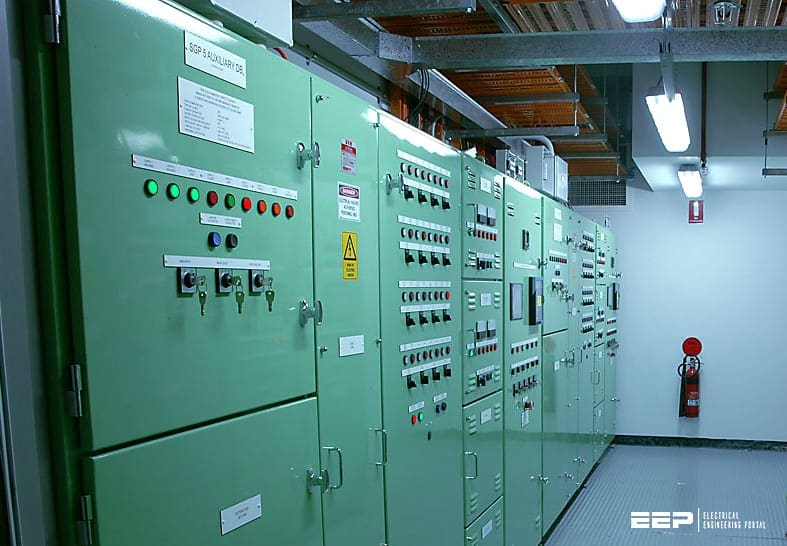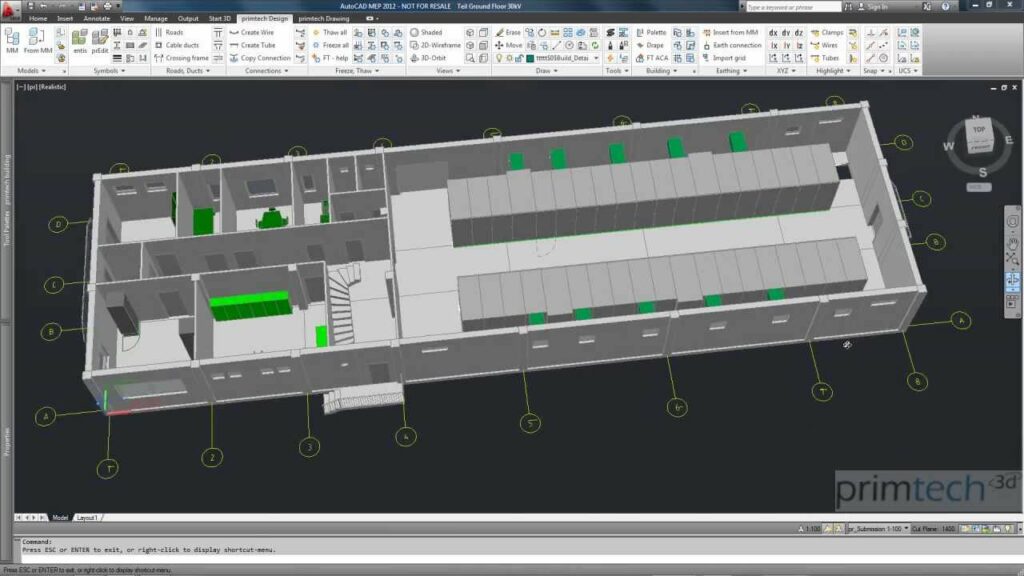A substation is a critical part of the electrical grid, providing a link between generation and distribution. The design of a substation must take into account many factors, including safety, reliability, cost, and aesthetics.
Safety is the most important consideration in substation design.
All equipment must be properly rated and installed to prevent accidents. Reliability is also crucial, as an outage at a substation can cause widespread power outages. Cost is another important factor, as substations are expensive to build and maintain.
Aesthetics are also considered in some cases, as substations can be located in urban areas where they may be visible to the public.
Every electrical substation is different, so the building that houses it must be designed to meet the specific needs of that substation. The building must be able to protect the substation equipment from the elements and provide a safe environment for workers. It is important to consider all of these factors when designing a substation building.
Substation Design Pdf
A substation is a vital component of any electrical grid. Its purpose is to take the high-voltage electricity from the transmission lines and step it down to a level that can be used by consumers. A well-designed substation will ensure the safe and reliable delivery of power to homes and businesses.
There are many factors that need to be considered when designing a substation, such as the voltage levels involved, the type of equipment to be used, the layout of the facility, and more. An experienced engineer will take all of these factors into account to create a custom substation design that meets the specific needs of the customer.
One important aspect of substation design is choosing the right location.
The site must have enough space for all of the equipment and structures needed, and it must be close enough to the transmission lines to minimize loss of power in transit. The location must also be safe from flooding or other natural disasters that could damage or destroy critical infrastructure.
Once the perfect location has been selected, construction can begin on putting together all of the necessary components.
This includes erecting utility poles, stringing wires between them, installing transformers, and more. The goal is to create a system that will effectively deliver electricity while also being able to withstand extreme weather conditions or other events that could cause problems.
After everything is up and running, it’s important to regularly maintain and inspect all aspects of the substation design.
This helps ensure that it continues to operate safely and efficiently for years to come.
Substation Design Standards
Substation design standards are important for the safe and reliable operation of substations. They ensure that substations are built to a consistent, high quality standard that meets the needs of the utility or power system operator.
There are many different types of substation design standards, developed by a variety of organizations including IEEE, ANSI, NFPA, and IEC.
The most common standards used in North America are the IEEE Standards for Substations (IEEE Std 7-4). These standards cover all aspects of substation design, from siting and layout to equipment specifications and testing.
Adhering to well-established substation design standards helps to ensure the safety of both workers and the public, as well as the reliability of power systems.
In some cases, failure to follow proper design standards can lead to catastrophic failures, such as the blackout that affected much of the northeastern U.S. in 2003.
Substation Construction Guidelines Pdf
In many respects, the construction of a new substation is no different than any other type of construction project. There are, however, some specific considerations that need to be taken into account when planning and constructing a substation. This blog post provides an overview of some of the key factors to consider when undertaking substation construction.
Substation sites need to be carefully selected in order to minimise the risk of problems during construction and operation. The site should be large enough to accommodate all the equipment required for the substation, as well as providing space for future expansion. It should also be located in an area where there is sufficient electrical demand to justify the investment in a new substation.
The layout of a new substation needs to be carefully planned in order to ensure safe and efficient operations. All buildings and structures should be located away from areas where high voltage equipment is installed. A clear line of sight should be maintained between all critical pieces of equipment so that operators can monitor operations safely.
Careful consideration needs to be given to the design and construction of foundations for new substations. The soil conditions at the site need to be assessed in order to determine the best foundation design for the project. In general, deep foundations are required for supporting high voltage equipment.
The size and type of foundation will also need to be considered when designing earthing systems for the substation.
The procurement process for new substations can vary depending on the size and complexity of the project. For small projects, it may suffice to simply purchase all the necessary equipment from a single supplier.
Substation Design Engineer
As a substation design engineer, you will be responsible for the planning, coordination, and execution of all substation projects. This includes working with other engineers to develop plans and specifications, preparing cost estimates, overseeing construction and testing, and commissioning the finished product. You will also be responsible for maintaining accurate records of all substations under your purview and ensuring that they are in compliance with all applicable codes and regulations.
Electrical Substation Design Calculations Pdf
If you are in the process of designing an electrical substation, there are a number of calculations that you will need to do in order to ensure that the substation is able to meet the demands placed upon it. These calculations can be divided into three main categories: system load, equipment sizing, and cable sizing.
System load refers to the amount of electricity that will be flowing through the substation at any given time.
This includes both the maximum demand (the highest amount of electricity that your system will need to meet at any one time) and the average demand (the average amount of electricity that your system will need to meet over a period of time). You will need to know these values in order to determine the size of transformer and other equipment required for your substation.
Equipment sizing refers to choosing equipment that is large enough to handle the amount of electricity flowing through your substation.
This includes not only the transformer, but also circuit breakers, disconnect switches, and other devices. You will need to select devices that have a high enough rating to handle not only the maximum demand, but also any surge conditions that may occur.
Cable sizing refers to choosing cables that are large enough to carry the amount of electricity flowing through your substation without losing too much voltage due too resistance.
It is important to choose cables with a low voltage drop so as not cause problems downstream with equipment or with customers using power from your substation.

Credit: electrical-engineering-portal.com
How Do You Design a Substation?
A substation is a critical part of the electrical grid, providing a safe and reliable connection between high-voltage transmission lines and lower-voltage distribution lines. The first step in designing a substation is to determine the specific needs of the local electrical grid. Once the requirements are understood, the next step is to develop a conceptual design for the substation.
This design must take into account factors such as capacity, voltage levels, environmental conditions, and safety.
After the conceptual design is complete, the next step is to develop a detailed engineering design. This design must include all of the components that will be used in the substation, as well as their dimensions and specifications.
In addition, the engineering design must also include plans for how all of the components will be connected and integrated into the overall substation layout.
Once the engineering design is finished, it must then be reviewed and approved by relevant authorities. After approval has been obtained, construction can begin on building the substation according to the approved plans.
What are the Three Types of Substations?
A substation is an electrical installation where equipment for generation, transmission, distribution and utilization of electric power is present. Substations are usually located on the surface but may be underground or air-insulated. The three types of substations are generating stations, transmission stations and distribution stations.
Generating stations convert mechanical energy into electrical energy and are usually located near sources of fuel such as coal mines or hydroelectric dams. Transmission stations step up the voltage of electricity so that it can be transmitted over long distances without losing power. Distribution substations step down the voltage so that it can be used in homes and businesses.
What Should I Consider in Substation Design?
There are many factors to consider when designing a substation. The first is the type of equipment that will be used. This includes both the primary and secondary equipment.
The second is the size of the substation. This will determine the amount of space that is available for equipment and other components. The third factor is the location of the substation.
This includes both the physical location and the climate. The fourth factor is the voltage and current ratings of the substation. This will determine the size and type of transformers that are required.
The fifth factor is the safety of the substation. This includes both personal safety and environmental safety.
What are the Different Substation Design?
There are many different substation designs, but they all have the same basic components. A substation consists of a transformer, switchgear, and other equipment. The transformer changes the voltage of the electricity so it can be used by homes and businesses.
The switchgear controls the flow of electricity to homes and businesses. Other equipment in a substation includes breakers, capacitors, and reactors.
Substation design: BIM – Building Information Modeling – control building for HV substations
Conclusion
Substation building design is a critical component in the delivery of safe and reliable electric power. The design must consider the functional requirements of the substation, as well as the physical security and environmental factors.
The substation building housing electrical equipment can be a single story or multi-story structure.
The size and type of substation equipment will dictate the internal layout of the building. The exterior finish should be selected to blend in with the surroundings, and to resist weathering.
The roof is one of the most important elements of the substation building design.
It must be strong enough to support the weight of any equipment that may be installed on it, and it must be able to withstand high winds. The roof should also have a drainage system to direct rainwater away from the building.
The walls of the substation building must be sturdy enough to protect against vandals and intruders, while still allowing for ventilation of heat-generating equipment inside.
Windows should be located high up on exterior walls, out of reach of would-be trespassers.
Security fencing should surround the perimeter of the substation property, with gates that can be locked when necessary.



